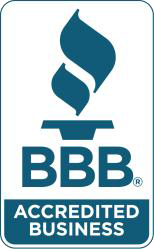
If you find yourself struggling to fall asleep because of disruptive noises, earplugs might provide a simple and effective solution. Noises that may be preventing your ability to get a good night’s sleep can be reduced or totally blocked out by using a pair of earplugs at night. Getting a restful night’s sleep is vital for your overall health and well-being and with an assortment of earplugs on the market, you should be able to get a pair that’s best for you.
How regular earplug users can avoid ear issues
Earplugs can definitely help you get a restful night’s sleep, but if they’re used on a regular basis, they can also present some risks to your ears if not used properly. You will be able to maintain the health of your ears and avoid complications by getting a better understanding of these factors.
Preventing ear infections
One of the biggest concerns with using earplugs is the risk of ear infections.
- Symptoms: Fluid buildup, inflammation, earaches, and short-term hearing loss are all possible consequences of ear infections.
- Earwax Buildup: When the natural extrusion of earwax is blocked by earplugs, ear infections can be the result. Earwax contains bacteria which, if it accumulates too much, can result in an ear infection.
- Prevention: Ensure earplugs are used correctly to avoid entrapping excess wax in your ears.
Correct hygiene is essential
Superior hygiene practices are crucial when using earplugs on a routine basis. Earplugs can harbor bacteria if not handled properly.
- Cleaning Earplugs: Frequently clean earplugs with mild soap and water. A clean towel can be used to dry them.
- Storage: Keep your earplugs free of dirt and bacteria by storing them in a clean case when they’re not being used.
- Handling: Avoid handling earplugs with dirty hands or setting them on dirty surfaces.
Don’t cram them too far in
Pain and potential injury can be the result of pushing your earplugs too far up into your ear canal.
- Risks: Eardrum injury, pain, and irreversible hearing loss can be the outcome of excessive pressure. Make sure your earplugs are a good size for your specific ear canal and think about sleeping on your back.
- Side Sleeping: Sleeping on your side can push earplugs further into the ear canal, elevating pressure on sensitive ear structures.
- Proper Insertion: Earplugs should be easy to remove with your fingers. Your earplugs are too far in if you need a pair of tweezers to take them out.
Choosing the correct earplugs
A considerable difference in safety and comfort can be gained by choosing the right type of earplugs for your ears. Earplugs come in a variety of materials, including:
- Silicone Earplugs: Can mold to the outer ear and offer custom fit.
- Wax Earplugs: Supply effective noise reduction though less common.
- Foam Earplugs: Expand and mold to the ear canal, giving effective noise reduction.
Finding earplugs that suit your requirements and fit correctly is key to ensuring that you get the most benefit without compromising ear health.
Monitoring and maintaining earplugs
You should keep track of the condition of your earplugs. Examine them for any indications of wear and tear or damage, and replace them as needed. Using worn-out or damaged earplugs can result in inadequate noise reduction and increase the risk of ear infections or discomfort.
Your quality of sleep can be enhanced by using earplugs to block out bothersome noises. But in order to ensure ear health it’s important to follow proper hygiene and keep them well maintained. Call us right away if you encounter any issues with your hearing or ear health.
The content of this blog is the intellectual property of MedPB.com and is reprinted here with permission.
The site information is for educational and informational purposes only and does not constitute medical advice. To receive a personalized free hearing test and hearing loss consultation, call today to set up an appointment.










